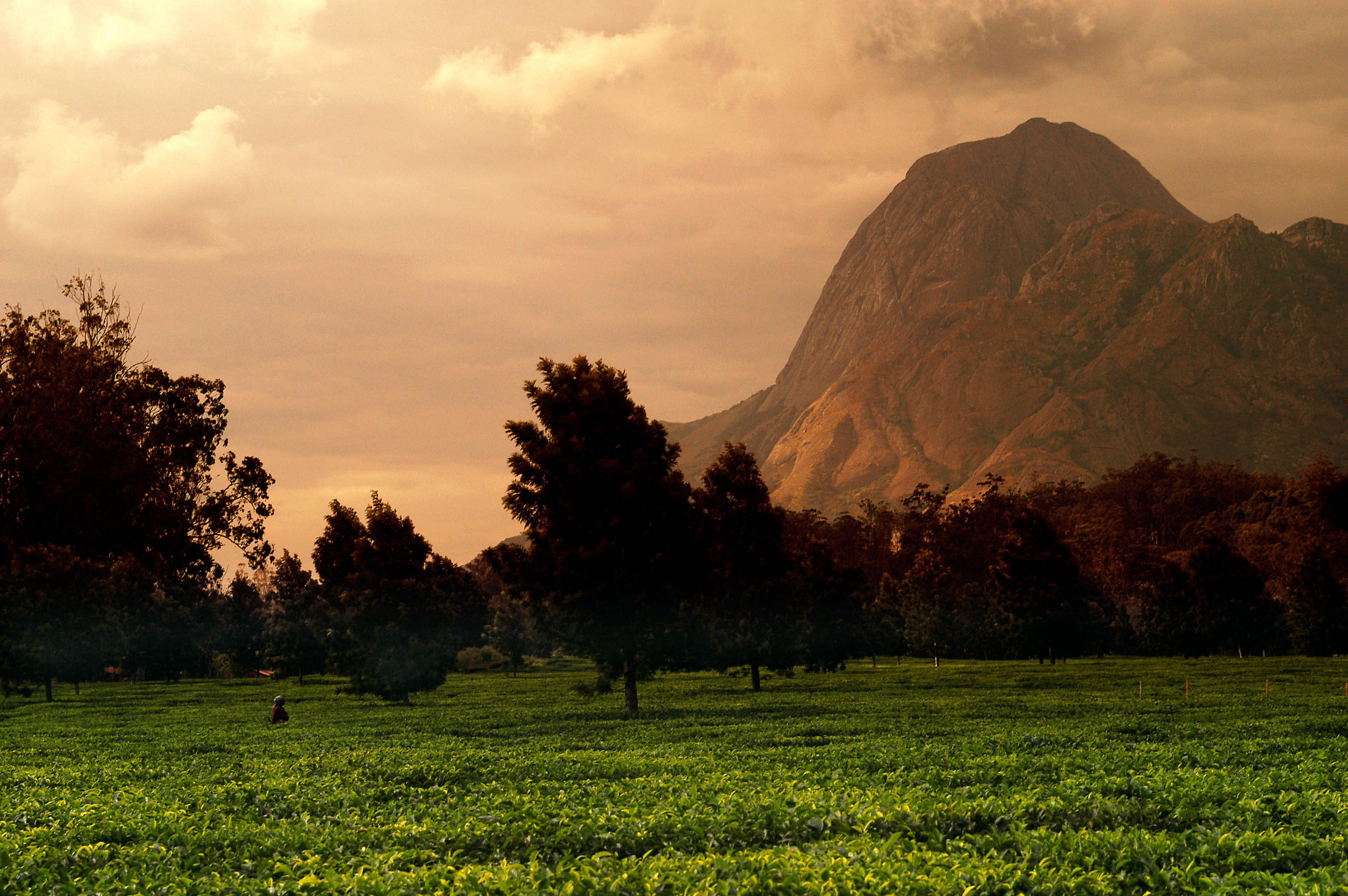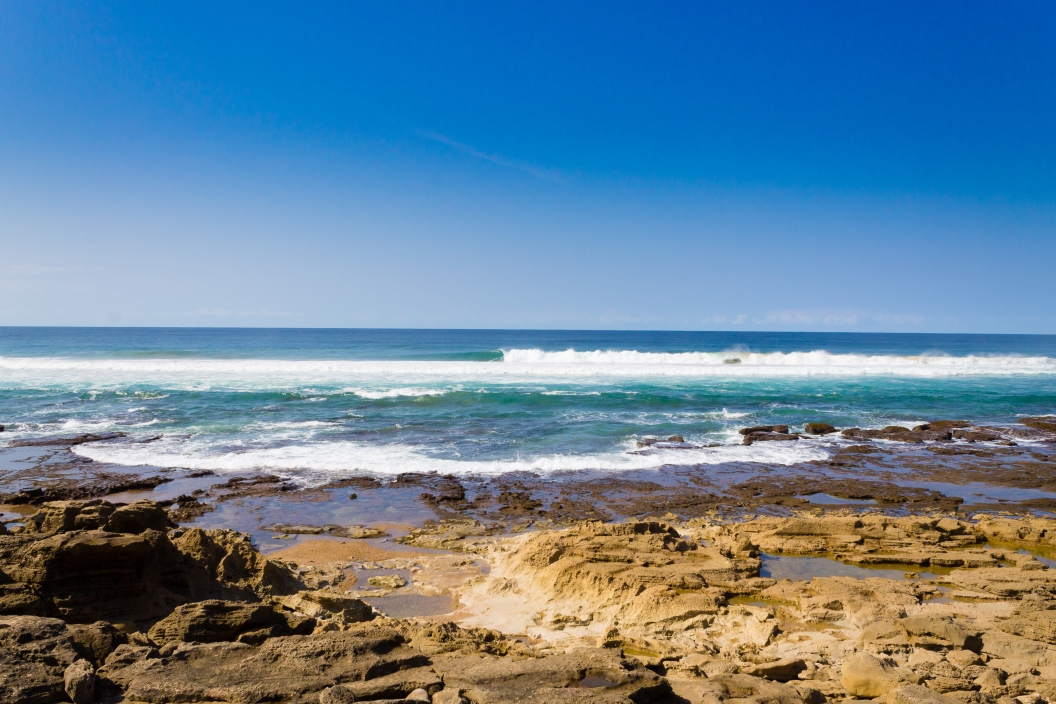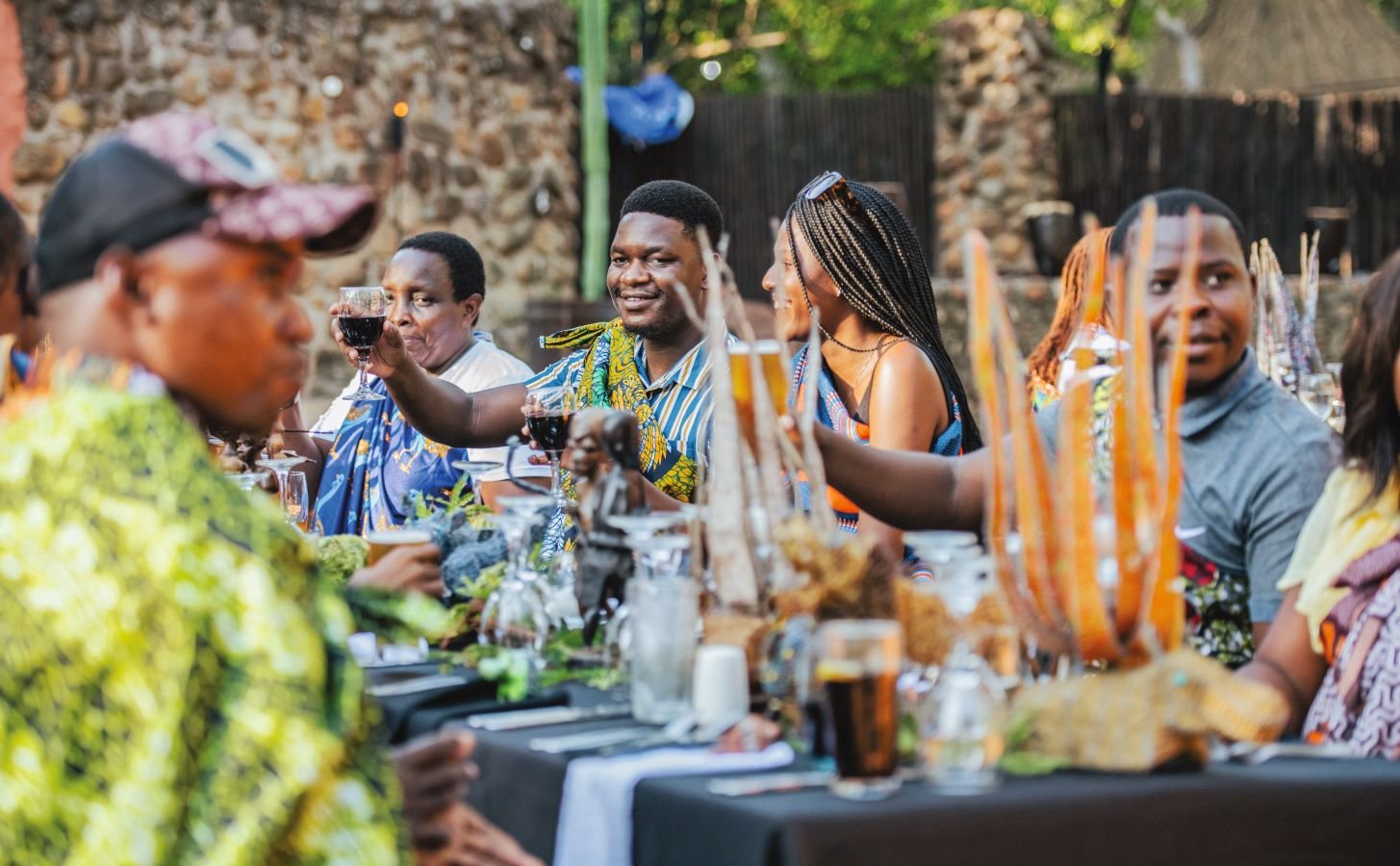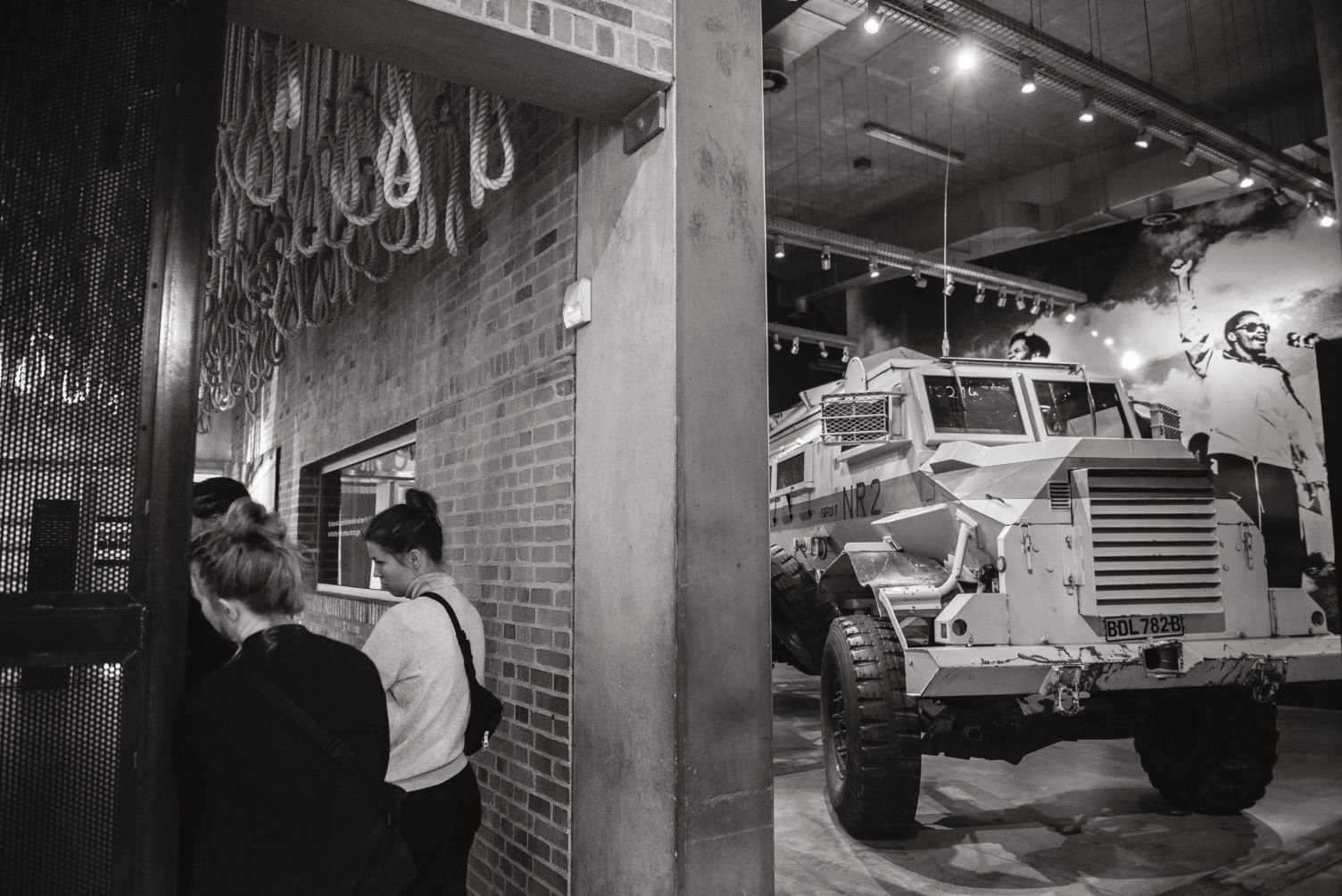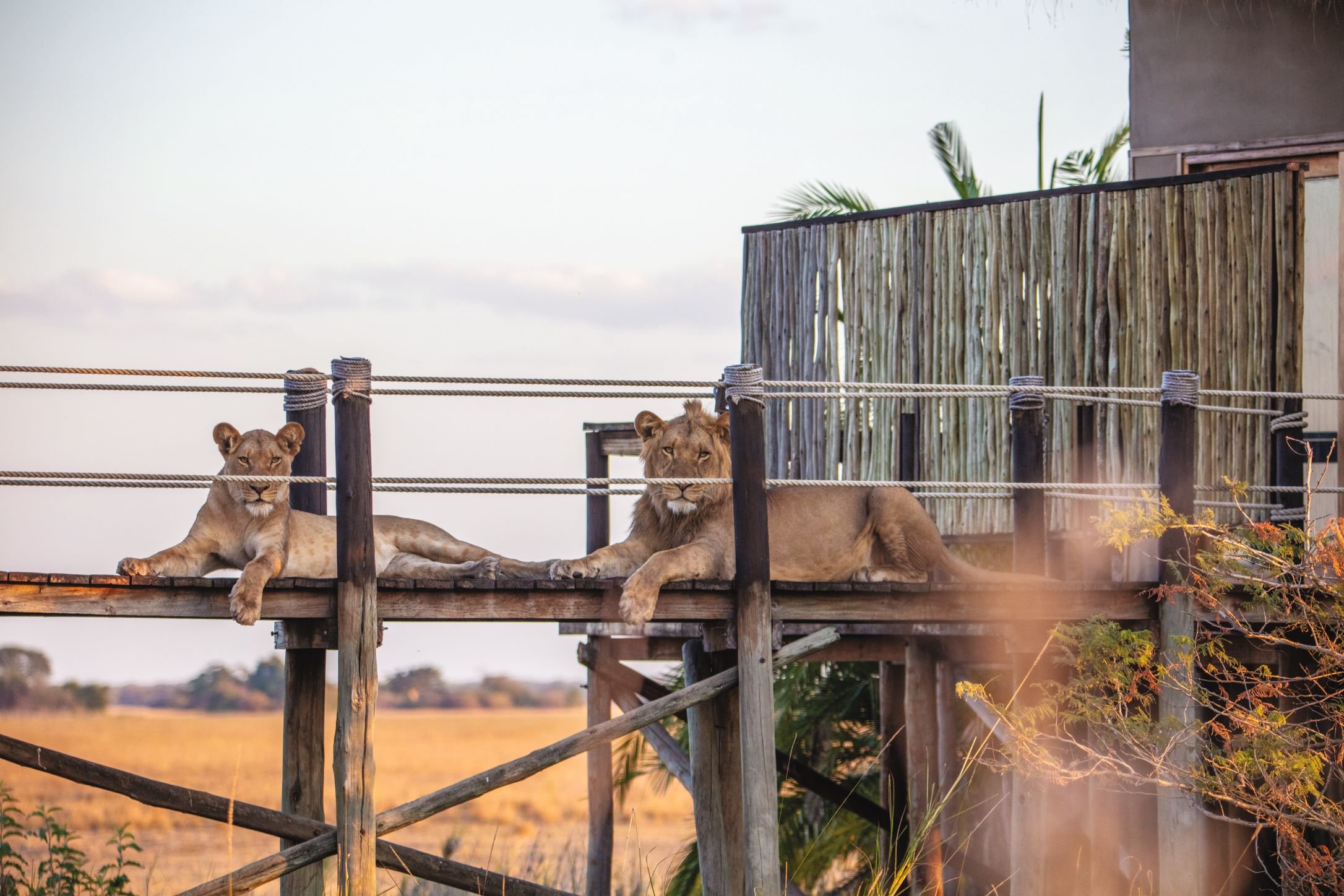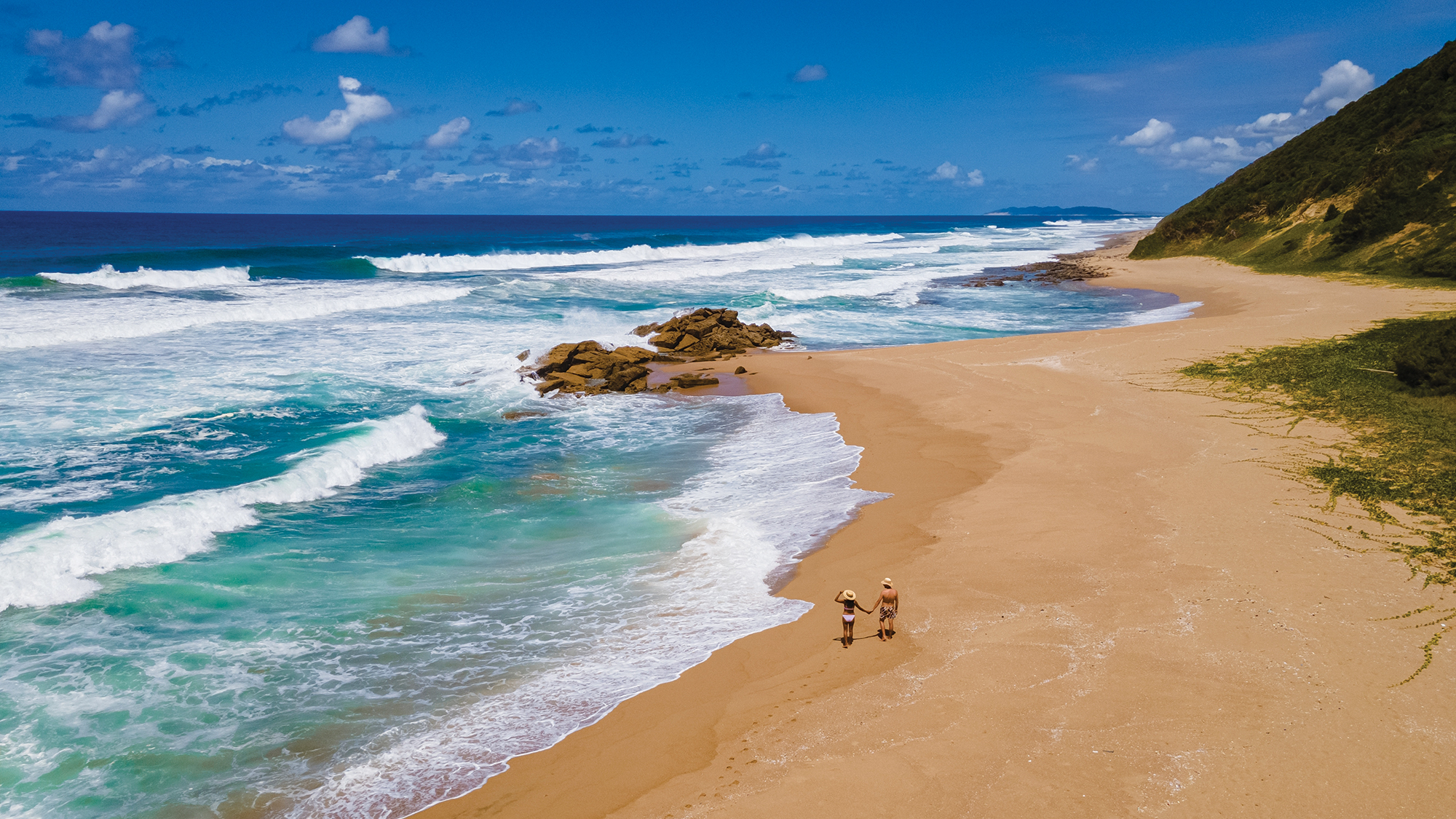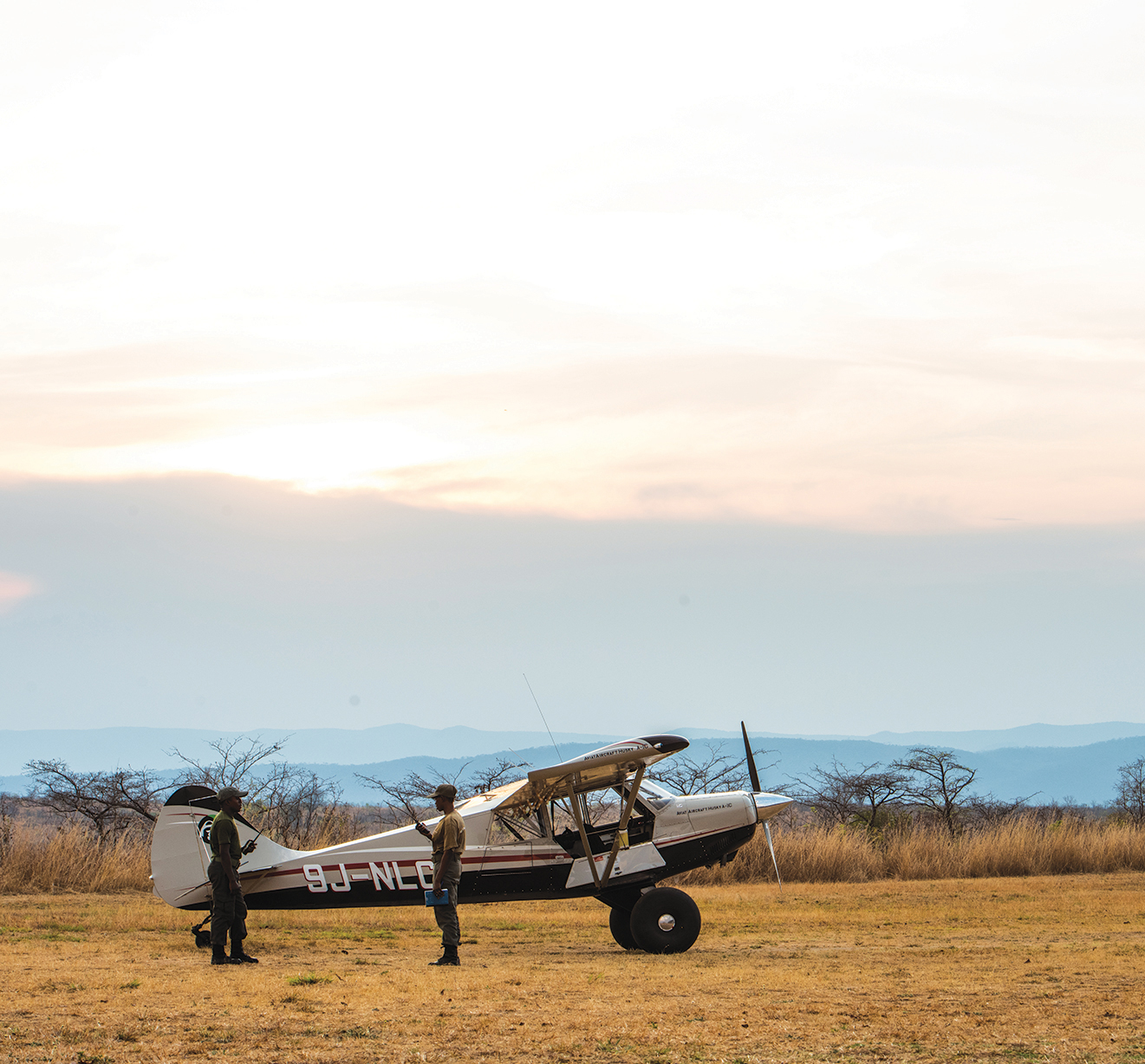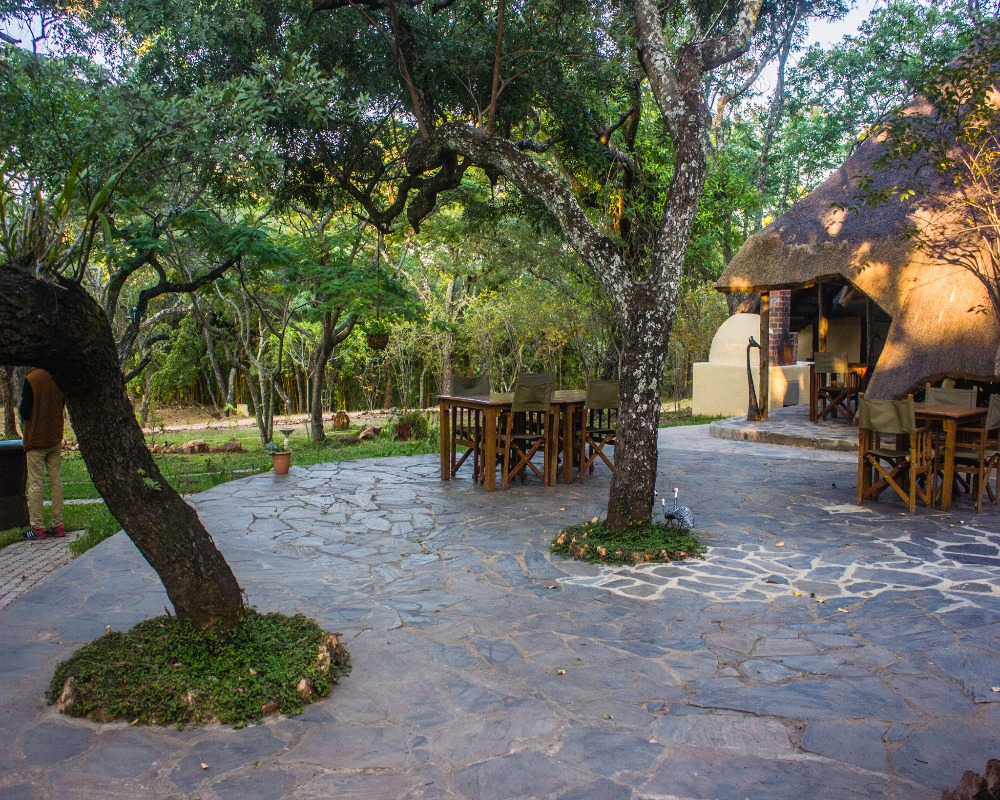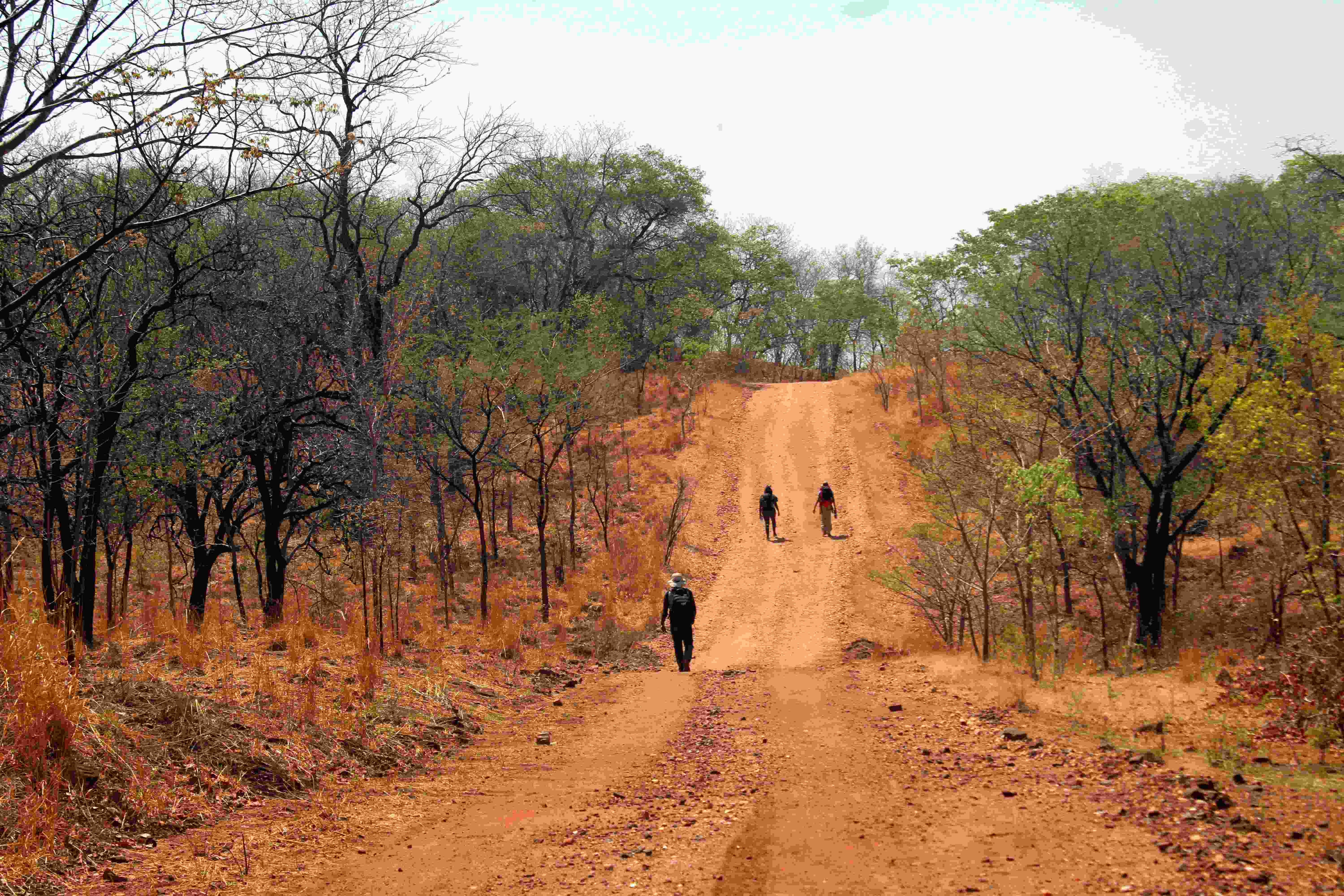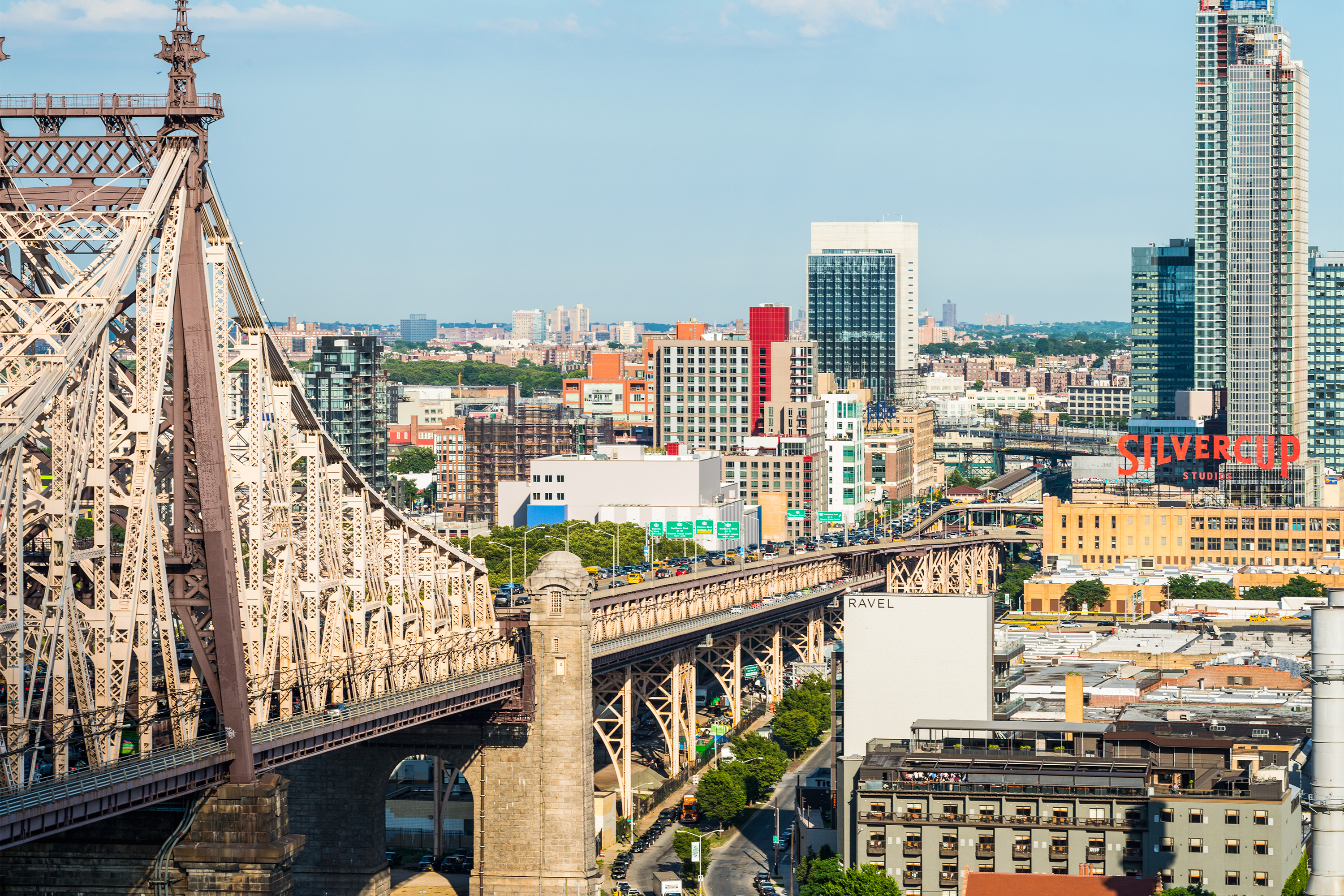Sixty-six kilometres from Blantyre, Malawi’s commercial capital, Mount Mulanje sprouts from the lush, green tea plantations and rises high into the skies. The highest point, Sapitwa (which literally means unreachable) is at 3,002 metres above sea level, making it the highest point in southern central Africa.
It was around six a.m. when my guide, Albert Marumo, and I set out from the Likhubula Forestry Lodge, where I spent the night. I bought a sturdy hand carved Mulanje cedar walking stick from a curios vendor near the lodge and began the four hour hike to one of the more than 20 peaks on the mountain, Chambe. The peak is perched at 2,500 metres above sea level. The longer trek to Sapitwa and back to the foot of the mountain takes about three days.
It was an idyllic hike with picturesque views of the world miles below and a trek through evergreen forests in the river valleys, deep trenches and gorges. Along the way, springs of fresh water helped us cool ourselves as Albert told me the stories of the arcane mountain.
Mount Mulanje (also known as Mulanje Massif) is rich in biodiversity, with over 500 indigenous plant and animal species, owing to its isolated geographic location. That day Albert spotted, among others, the pygmy chameleon, which is only found on the mountain and surrounding areas.
One thing that you’ll notice at Chambe is the beautiful shrubs sprouting from cracks in the big rocks. The endangered Mulanje cedar is endemic to the mountain and was declared Malawi’s national tree in 1984.
There is a lot of folklore surrounding Mulanje. The highest peak, Sapitwa bears its name because of the local belief that it was unreachable. Legend has it that there were ‘spirits’ up the mountain that would take away those who tried to get to the summit.
One pool or natural dam on the mountain, Dziwe la Nkhalamba (The old woman’s pool), has a tale of a mysterious old woman who appeared and disappeared from the pool after being sucked into its waters. The local communities, who are largely Lhomwe, Yao and Mang’anja people, mostly believe the mountain is closely guarded by spirits.
Since childhood, I have heard stories of spirits that would appear and disappear at whim in front of people who go up the mountain. As well as stories of strange food you would find by the roadside, that you had to eat on your own, lest you get taken away.
Other stories centre around Napolo, a ‘two tailed animal’ that lives underneath the rocks of the mountain. According to local mythology, when Napolo migrates from one mountain peak to another, this results in flooding and rockslides.
Like many locals, Albert is familiar with these stories and regaled me with similar tales. He tells me that though he has reached Sapitwa over ten times he has not had any encounters with the spirits. But he always makes a point of respecting what the elders teach regarding the spirits they believe inhabit the area.
According to Kondwani Chamwala, a programmes and communications manager at the Mulanje Mountain Conservation Trust (MMCT), the mystery tales of Mulanje make the hike more fun and appealing.
“I have gone to Sapitwa nine times. It is an experience for the fit and determined. Unlike the other peaks, where you have paths, the hike over Sapitwa is directed by arrows on the rocks. If you miss an arrow, you can get lost, which may have brought the stories that spirits take you up,” he says.
According to Kondwani, the best time to visit is in July, because the rainy season is over and the rocks are less slippery. It is the month that the MMCT hosts the Mulanje Mountain Porters Race, also referred to as Africa’s Ultimate Challenge. This year, the race, which attracts locals and international visitors, will be held on July 13. It will be held, for the first time in 23 years, in two categories: one covering six kilometres and another covering 25 kilometres.
The Mulhako wa Alhomwe, is a festival celebrating the culture of the Lhomwe people who dominate Mulanje District. It takes place every October at the foot of the mountain and highlights the people’s way of life, food, dress, music, dance and knowledge of herbal medicine. It is one of the most important events on the country’s cultural calendar.
We ascended Mount Mulanje on a scorching hot day, so starting our journey early in the morning paid off. But, as the sun sunk into the west it began to get colder. Deep into the night, it was so cold we had to light a log fire to keep warm. In the morning we woke up to light rain, which continued until we got back to the foot of the mountain.
“Changes in the weather are phenomenal so be prepared for this. At the Sapitwa Peak, you can have changes every 30 minutes. Towards the end of July, it may be freezing cold, to the point of having snow,” says Kondwani.
It has long been said that JRR Tolkien’s setting for The Lord of the Rings and The Hobbit was inspired by the author’s trek to Mount Mulanje. Reflecting on my time there, it’s not hard to imagine the mysterious mountain being the inspiration for some of the greatest tales ever written
